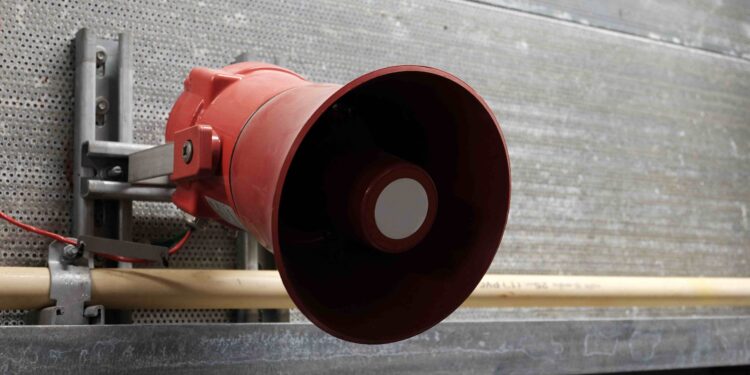Many industrial settings across the Middle East are home to combustible substances such as gas or dust that can pose a risk to health, safety, and operations. We are all familiar with natural gas as an important energy source, but various gases with associated hazards are also commonly used throughout industrial and manufacturing sectors.
This is critical as the region is currently positioning itself to become a manufacturing hub, with major investments in projects and skills acquisition already made. But more than that, those same risks are also present in less widely recognised but still important sectors. Those that produce significant amounts of dust and fibres, like dust in the post-processing of timber or fibres in textile production, are faced with an ever-present risk of combustion.
As demonstrated by recent incidents at oil refineries in Iraq and Indonesia, these hazards should prompt industries to seek out and install emergency EVAC systems to protect personnel in the event of an emergency. However, these systems can be taken to the next level with the addition of explosion-protected cameras and network audio solutions. Network audio, especially, has shown great promise in enhancing site safety, but its applications extend further than that and have the potential to improve site security and overall operational efficiency.

The benefits of network audio
Network audio is already used in several industries, but until recently, it has not been designed for use in hazardous areas. However, thanks to new developments in the space, IP-based explosion-protected speakers are now bringing network audio solutions to high-risk environments.
While network audio does not rule out the use of analogue devices in hazardous areas, given they are still required for EVAC purposes, network audio offers increased value to operators. They are less costly to install and do not require complex wiring and long cabling, a benefit when electrical installations can only be carried out when an area is deemed safe or non-hazardous in line with relevant regulations. Temporarily shutting down production or disrupting operations to carry out necessary installations can be a costly exercise and can be avoided when the hardware is easier to install, configure, and use.
An all-in-one network audio offering with a Power over Ethernet (PoE) connection enables operators to combine hardware and software, including audio management. It further enables them to conduct system health testing remotely, a major advantage in the context of distributed site operations. And, if built on an open platform, offerings can be combined with other solutions and connected to form part of a wider security and surveillance system.
Putting health and safety first
The risks to the health and safety of those working in hazardous areas are far greater than in any other typical industrial setting, which is why operators are inclined to invest in as many solutions as possible.
For example, operators can combine an explosion-protected horn speaker with an explosion-protected thermometric camera, or any visual camera equipped with analytics. Should the camera detect smoke or missing personal protective equipment (PPE), operators can manually or automatically trigger the speaker to play a prerecorded message, alerting workers to the anomaly. Built-in zoning features can also let operators update specific zones with scheduled messages as well as interrupting already scheduled messages with urgent ones.
While certified EVAC systems will continue to take precedence over network audio as the optimal emergency or evacuation solution, network audio can act as an early warning situation and precipitate action before a scenario escalates into a full emergency. In doing so, it helps to mitigate risk and enhances the health and safety of all employees.
In the name of efficiency and security
In today’s business climate, any technological investment must unlock value that is above and beyond that investment’s primary function. In this case, integrating network audio solutions into existing surveillance systems offers benefits above and beyond simply broadcasting live and prerecorded messages.
For example, if a piece of equipment in a hazardous area experiences a notable temperature change, remote operators can issue live instructions directly to people on the ground. Thanks to innovative hardware design and built-in digital signal processing capabilities, those instructions can be heard loudly over long distances and noisy industrial environments.
Security systems overall are taking anomaly detection to the next level thanks to custom analytics. Cameras with embedded analytics can detect anomalies and, thanks to being integrated with industrial control and network audio hardware, can immediately cease or suspend operations and trigger automated audio messages to alert personnel.
Hazardous areas can also be the home to very expensive equipment and assets, and so there is an incentive to extend security capabilities into those areas to the best of operators’ abilities. If a camera identifies a potential trespasser, operators can issue an alert to deter them from unauthorised access.
This is the value that operators, in both the Middle East and around the world, stand to unlock with the integration of network audio into their security systems. Through the right methods, vendors and installation procedures, working in some of the world’s most dangerous environments can be aided by solutions that promote efficiency, security, health, and safety.










Discussion about this post